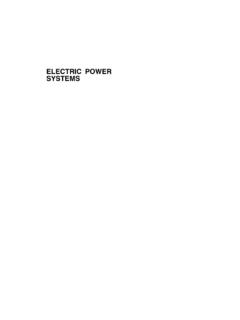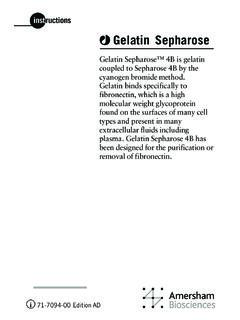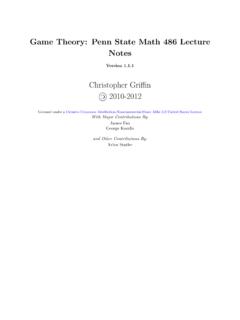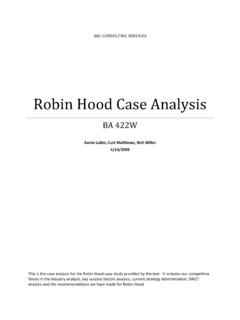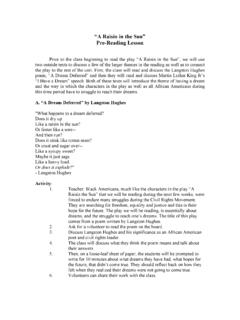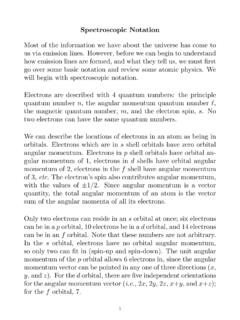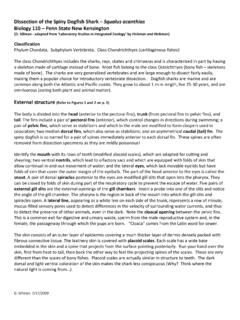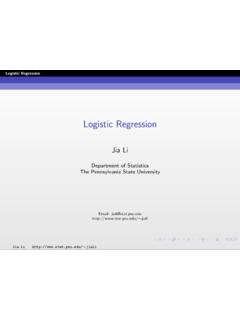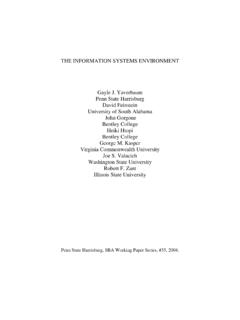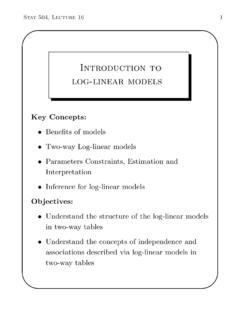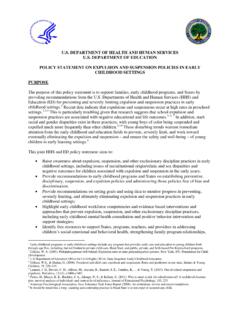Transcription of Common Method Biases in Behavioral Research: A Critical ...
1 Common Method Biases in Behavioral research : A Critical Review of theLiterature and Recommended RemediesPhilip M. Podsakoff, Scott B. MacKenzie, andJeong-Yeon LeeIndiana UniversityNathan P. PodsakoffUniversity of FloridaInterest in the problem of Method Biases has a long history in the Behavioral sciences . Despite this, acomprehensive summary of the potential sources of Method Biases and how to control for them does notexist. Therefore, the purpose of this article is to examine the extent to which Method Biases influencebehavioral research results, identify potential sources of Method Biases , discuss the cognitive processesthrough which Method Biases influence responses to measures, evaluate the many different proceduraland statistical techniques that can be used to control Method Biases , and provide recommendations forhow to select appropriate procedural and statistical remedies for different types of research researchers agree that Common Method variance (.)
2 Variance that is attributable to the measurement Method rather thanto the constructs the measures represent) is a potential problem inbehavioral research . In fact, discussions of the potential impact ofcommon Method Biases date back well over 40 years (cf. Campbell& Fiske, 1959), and interest in this issue appears to have continuedrelatively unabated to the present day (cf. Bagozzi & Yi, 1990;Bagozzi, Yi, & Phillips, 1991; Campbell & O Connell, 1982;Conway, 1998; Cote & Buckley, 1987, 1988; Kline, Sulsky, &Rever-Moriyama, 2000; Lindell & Brandt, 2000; Lindell & Whit-ney, 2001; Millsap, 1990; Parker, 1999; Schmitt, Nason, Whitney,& Pulakos, 1995; Scullen, 1999; Williams & Anderson, 1994;Williams & Brown, 1994).
3 Method Biases are a problem because they are one of the mainsources of measurement error. Measurement error threatens thevalidity of the conclusions about the relationships between mea-sures and is widely recognized to have both a random and asystematic component (cf. Bagozzi & Yi, 1991; Nunnally, 1978;Spector, 1987). Although both types of measurement error areproblematic, systematic measurement error is a particularly seriousproblem because it provides an alternative explanation for theobserved relationships between measures of different constructsthat is independent of the one hypothesized. Bagozzi and Yi (1991)noted that one of the main sources of systematic measurementerror is Method variance that may arise from a variety of sources: Method variance refers to variance that is attributable to the measure-ment Method rather than to the construct of interest.
4 The termmethodrefers to the form of measurement at different levels of abstraction,such as the content of specific items, scale type, response format, andthe general context (Fiske, 1982, pp. 81 84). At a more abstract level, Method effects might be interpreted in terms of response Biases suchas halo effects, social desirability, acquiescence, leniency effects, oryea- and nay-saying. (p. 426)However, regardless of its source, systematic error variance canhave a serious confounding influence on empirical results, yieldingpotentially misleading conclusions (Campbell & Fiske, 1959). Forexample, let s assume that a researcher is interested in studying ahypothesized relationship between Constructs A and B.
5 Based ontheoretical considerations, one would expect that the measures ofConstruct A would be correlated with measures of Construct , if the measures of Construct A and the measures ofConstruct B also share Common methods, those methods may exerta systematic effect on the observed correlation between the mea-sures. Thus, at least partially, Common Method Biases pose a rivalexplanation for the correlation observed between the the above context, the purpose of this research is to (a)examine the extent to which Method Biases influence behavioralresearch results, (b) identify potential sources of Method Biases , (c)discuss the cognitive processes through which Method Biases in-fluence responses to measures, (d) evaluate the many differentprocedural and statistical techniques that can be used to controlmethod Biases , and (e)
6 Provide recommendations for how to selectappropriate procedural and statistical remedies for different typesof research settings. This is important because, to our knowledge,there is no comprehensive discussion of all of these issues avail-able in the literature, and the evidence suggests that many re-searchers are not effectively controlling for this source of of the Bias Caused by Common Method VarianceOver the past few decades, a considerable amount of evidencehas accumulated regarding the extent to which Method varianceinfluences (a) measures used in the field and (b) relationshipsbetween these measures. Much of the evidence of the extent towhich Method variance is present in measures used in behavioralresearch comes from meta-analyses of multitrait multimethodPhilip M.
7 Podsakoff and Jeong-Yeon Lee, Department of Management,Indiana University; Scott B. MacKenzie, Department of Marketing, Indi-ana University; Nathan P. Podsakoff, Department of Management, Uni-versity of concerning this article should be addressed to Philip , Department of Management, Kelley School of Business, Indi-ana University, 1309 East Tenth Street, Bloomington, Indiana : of Applied PsychologyCopyright 2003 by the American Psychological Association, , Vol. 88, No. 5, 879 9030021-9010/03/$ DOI: (cf. Bagozzi & Yi, 1990; Cote & Buckley, 1987, 1988;Williams, Cote, & Buckley, 1989). Perhaps the most comprehen-sive evidence comes from Cote and Buckley (1987), who exam-ined the amount of Common Method variance present in measuresacross 70 MTMM studies in the psychology sociology, marketing,business, and education literatures.
8 They found that approximatelyone quarter ( ) of the variance in a typical research measuremight be due to systematic sources of measurement error likecommon Method Biases . However, they also found that the amountof variance attributable to Method Biases varied considerably bydiscipline and by the type of construct being investigated. Forexample, Cote and Buckley (1987) found that, on average, methodvariance was lowest in the field of marketing ( ) and highestin the field of education ( ). They also found that typical jobperformance measures contained an average of methodvariance, whereas attitude measures contain an average of similar pattern of findings emerges from Williams et al.
9 S (1989)study of just the applied psychology addition to these estimates of the extent to which methodvariance is present in typical measures, there is also a growingbody of research examining the extent to which Method varianceinfluences relationships between measures (cf. Fuller, Patterson,Hester, & Stringer, 1996; Gerstner & Day, 1997; Lowe, Kroeck, &Sivasubramaniam, 1996; Podsakoff, MacKenzie, Paine, & Bach-rach, 2000; Wagner & Gooding, 1987). These studies contrastedthe strength of the relationship between two variables when com-mon Method variance was controlled versus when it was not. Theyfound that, on average, the amount of variance accounted for whencommon Method variance was present was approximately 35%versus approximately 11% when it was not present.
10 Thus, there isa considerable amount of evidence that Common Method variancecan have a substantial effect on observed relationships betweenmeasures of different constructs. However, it is important to rec-ognize that the findings suggest that the magnitude of the biasproduced by these Method factors varies across research contexts(cf. Cote & Buckley, 1987; Crampton & Wagner, 1994).Not only can the strength of the bias vary but so can thedirection of its effect. Method variance can either inflate or deflateobserved relationships between constructs, thus leading to bothType I and Type II errors. This point is illustrated in Table 1,which uses Cote and Buckley s (1987) estimates of the averageamount of trait variance, the average amount of Method variance,and the average Method intercorrelations and inserts them into theequation below to calculate the impact of Common Method vari-ance on the observed correlation between measures of differenttypes of constructs ( , attitude, personality, aptitude).
